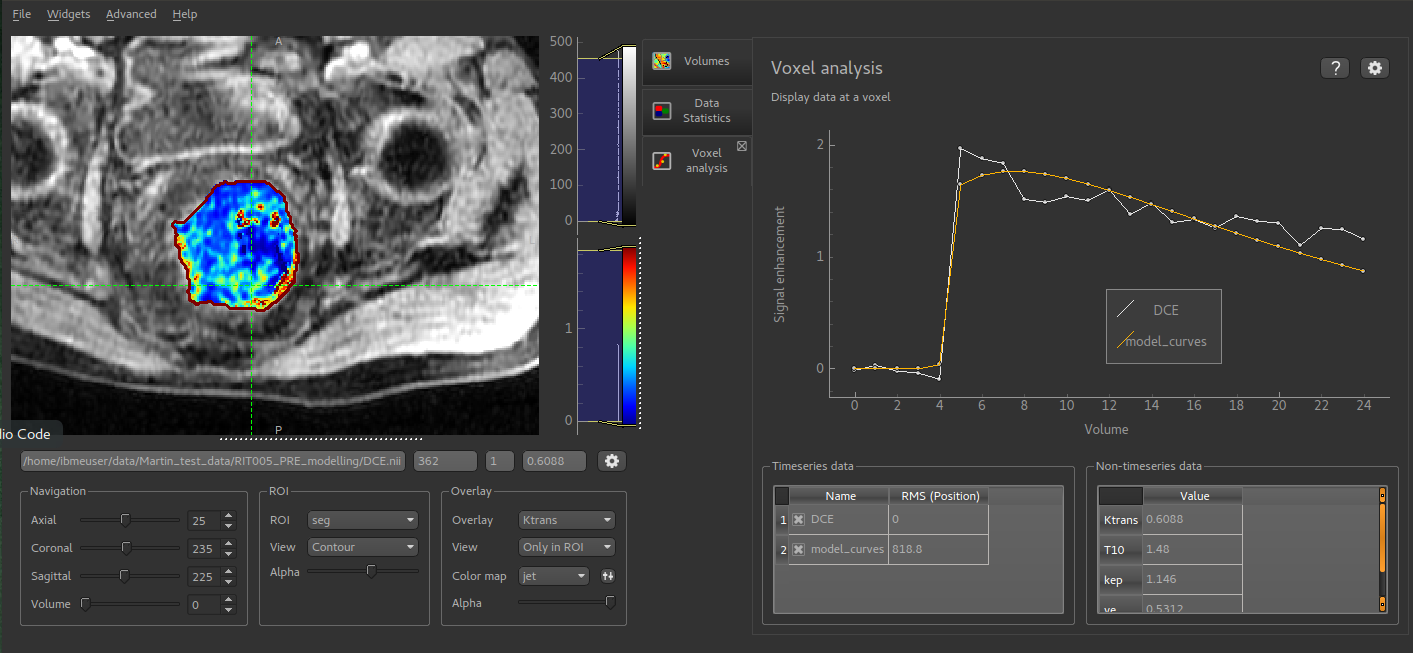 Quantiphyse¶
Quantiphyse¶

Quantiphyse is a visualisation and analysis tool for 3D and 4D biomedical data. It is particularly suited for physiological or functional imaging data comprised of multi volumes in a 4D (time-) series and/or multimodal imaging data. Quantiphyse is built around the concept of making spatially resolved measurements of physical or physiological processes from imaging data using either model-based or model-free methods, in a large part exploiting Bayesian inference techniques. Quantiphyse can analyse data both voxelwise or within regions of interest that may be manually or automatically created, e.g. supervoxel or clustering methods.

Features¶
- 2D orthographic visualisation and navigation of data, regions of interest (ROIs) and overlays
- Universal analysis tools including clustering, supervoxel generation and curve comparison
- Tools for CEST, ASL, DCE and DSC-MRI analysis and modelling
- Integration with selected FSL tools
- ROI generation
- Registration and motion correction
- Extensible via plugins - see Quantiphyse plugins.
License¶
© 2017-2019 University of Oxford
Quantiphyse is free for non commercial use. The license details are displayed on first
use and the LICENSE file is included in the distribution. For further information contact
the OUI Software Store. If you are
interested in commercial licensing you shold contact OUI in the first instance.
Getting Quantiphyse¶
Quantiphyse is available on PyPi - see Installation of Quantiphyse.
Major releases of Quantiphyse are also available via the Oxford University Innovation Software Store. The packages held by OUI have no external dependencies and can be installed on Windows, Mac and Linux. They may lag behind the current PyPi release in terms of functionality.
User Guide¶
Bugs/Issues¶
Bugs may be submitted using the Github issue tracker for Quantiphyse.
For any other comments or feature requests please contact the current maintainer:
Contributors¶
- Martin Craig (Current maintainer)
- Ben Irving (Original author)
- Michael Chappell
- Paula Croal